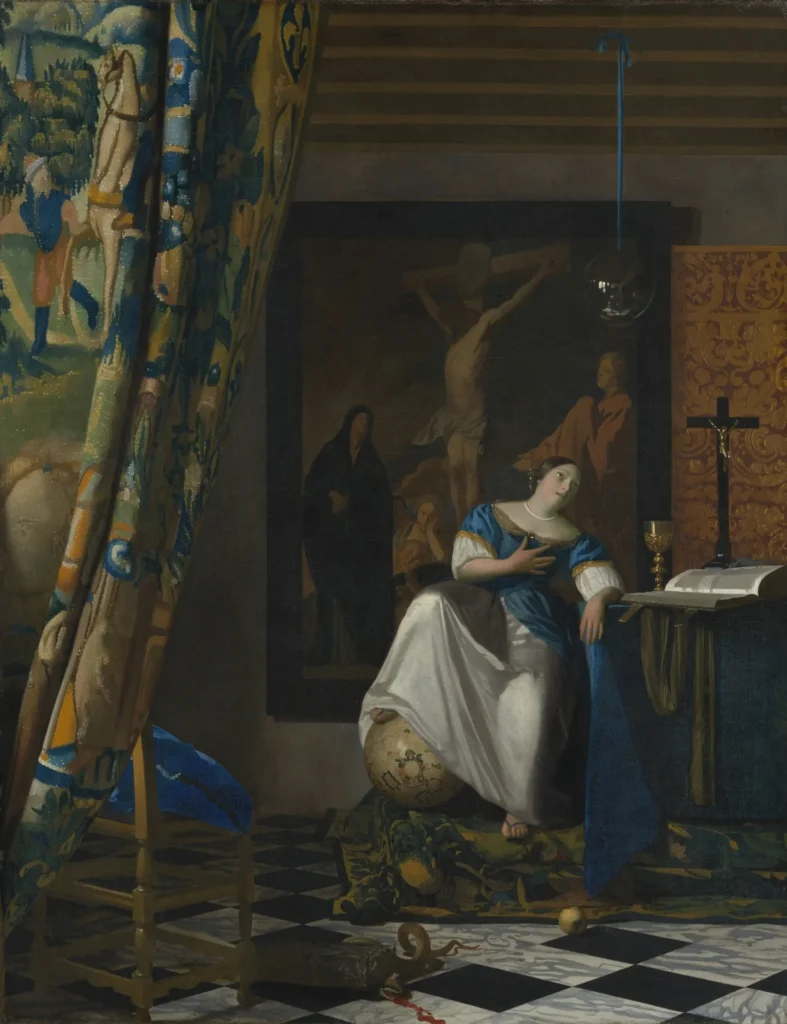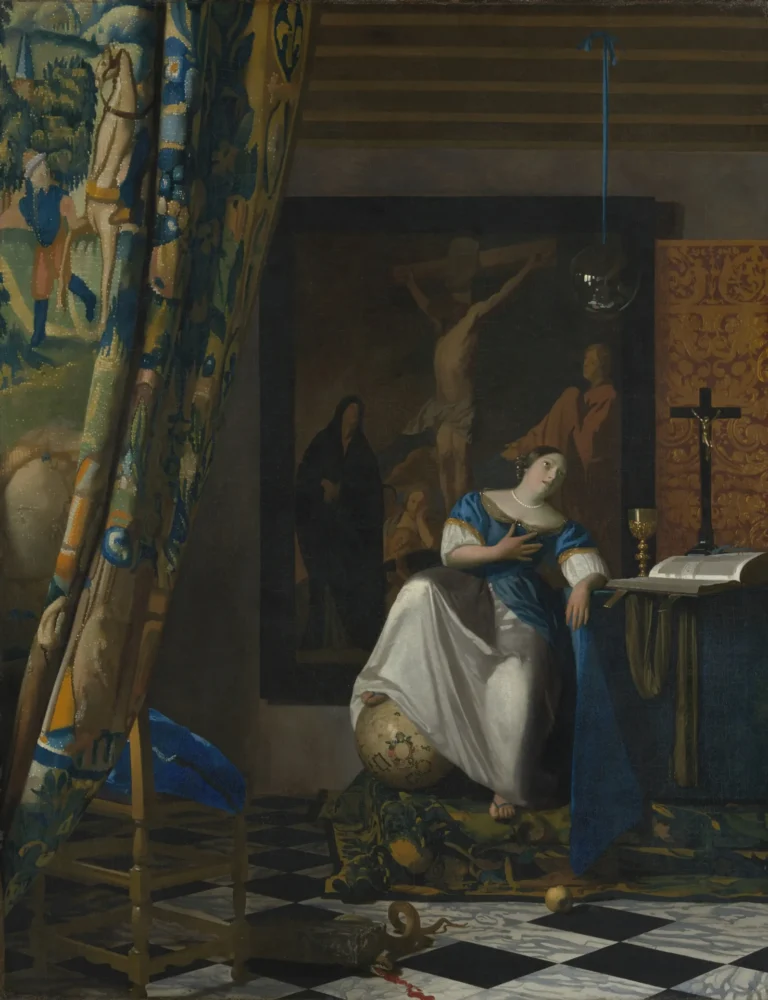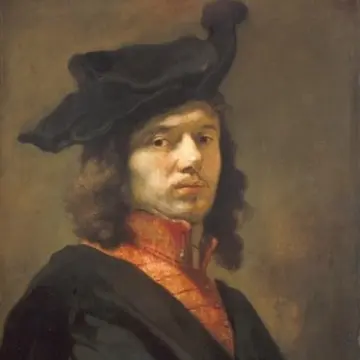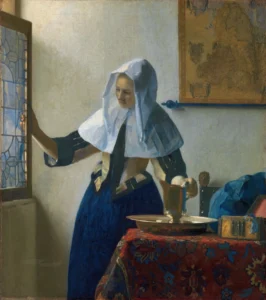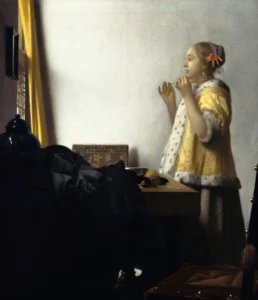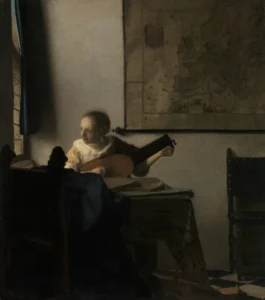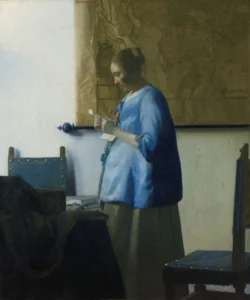Allegory of the Catholic Faith (1670–72)
This significant painting by Johannes Vermeer, housed at the Metropolitan Museum of Art, presents a powerful allegorical representation of Catholic Faith. Measuring 114.3 cm by 88.9 cm, this artwork captures a devout woman symbolizing faith, surrounded by rich Catholic iconography such as a chalice, an open liturgical text, and a crucifix. The detailed elements create a complex dialogue about material and spiritual realms, reflecting Vermeer’s exploration of deep religious themes in a time marked by tension between nationality and faith.
1670 - 1672
About the Artwork
The Allegory of the Catholic Faith was created during a time when Catholicism faced challenges in the predominantly Protestant Dutch Republic. Painted in the late 17th century, it draws significantly from the emblematic principles found in Cesare Ripa's Iconologia, which guided Vermeer in crafting visual narratives filled with rich symbolism. The artwork portrays a woman signifying Faith, accentuated by key religious symbols such as a chalice, which represents the sacrament, and a crucifix that brings forth the theme of redemption. The geopolitical context features in the globe at her feet, linking Dutch colonial ambitions with the spread of Catholicism. Ultimately, the artwork serves as a testament to the intertwined nature of faith, identity, and politics during Vermeer’s era.
Did You Know
Liked what you see? Add it to your collection.
Enjoyed reading? Share it.
... continued
Artist and Period
The painting is attributed to Johannes Vermeer, a prominent Dutch Golden Age painter, and is one of his later works.
Location and Dimensions
The painting is housed at the Metropolitan Museum of Art in New York and measures 114.3 cm by 88.9 cm (45.0 in by 35.0 in).
Iconography and Symbolism
The painting is rich in Catholic symbolism, drawing heavily from Cesare Ripa's Iconologia, an emblem book that provided allegorical illustrations and moral themes. The woman depicted, representing Faith, is shown with her hand on her heart and eyes raised, a pose similar to Ripa's image of Theology. The scene includes a chalice for sacramental wine, an open liturgical text (possibly the Catholic Missale Romanum), a crucifix, and Jesus’s thorns, all of which are symbols associated with the Catholic Mass and the Crucifixion of Christ.
Specific Elements
- Globe: The woman rests her foot on a globe, specifically a 2nd edition Jodocus Hondius terrestrial globe, which symbolizes Catholic world dominance and also references Dutch political power and colonial territories. The globe features a green and orange cartouche honoring Prince William of Orange, a celebrated leader in the Dutch fight for independence from Habsburg Spain.
- Serpent and Stone: At her feet, a serpent (symbolizing evil) is crushed by a stone slab, often interpreted as the 'cornerstone' of the Catholic Church or Christ defeating evil.
- Glass Orb: The woman's gaze is fixed on a glass orb, which may have been inspired by a Jesuit emblem book and symbolizes the spiritual realm beyond the material world.
Themes and Influences
The painting explores the tension between the material and immaterial, reflecting both Catholic materialism and transcendence. It also touches on the intersection of nationality and religion in 17th-century Europe, particularly the Dutch context of colonialism and cartography.
Jesuit Influence
Some scholars believe the painting shows strong Jesuit influences, especially in its depiction of the Crucifixion and the use of specific symbols like the glass orb, which may have been taken from Jesuit emblem books.
Provenance
The original owner of the painting is unknown, but it is speculated to have been commissioned by a learned and devout Catholic patron, possibly the Jesuits in Delft. The painting has been part of the Metropolitan Museum of Art's collection since 1931.
Overall, Allegory of the Catholic Faith stands out in Vermeer's body of work for its complex allegorical themes and its departure from his typical domestic scenes, instead delving into profound Catholic symbolism and theological themes.




